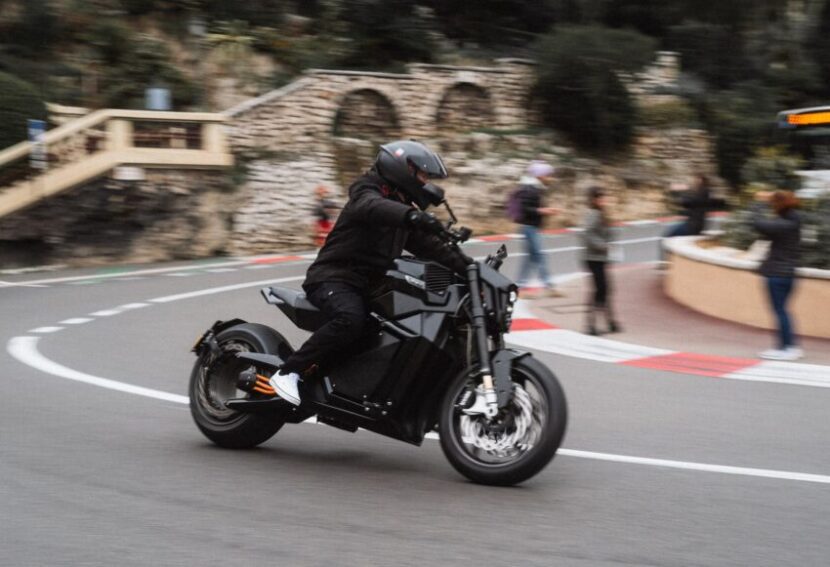
Mopeds vs. E-Scooters: Which is Right for Your Urban Commute
Are you tired of spending hours in city traffic during your daily commute? As urban mobility evolves, the choice between mopeds and e-scooters has become increasingly relevant for city dwellers seeking efficient transportation solutions.
Whether you’re looking to zip through congested streets or combine your commute with public transit, understanding the key differences between these two popular options can help you make an informed decision that perfectly matches your urban lifestyle and daily travel needs.
Performance and Practicality in Everyday Use
Choosing between a moped and an e‑scooter depends on daily travel patterns. Electric mopeds suit longer city rides, offering higher cruising speeds and greater real‑world range per charge.
When travelling significant distances across the city, mopeds provide the power and stability needed for a comfortable journey. You’ll find many reliable options in the electric moped scooter market.
E‑scooters excel on short, frequent trips and mixed‑mode commutes. Their portability makes it easy to take them onto buses or trains, store them under a desk, and weave through crowded streets.
Key advantages of e‑scooters for city hops include:
- Easy storage and carry options for multi‑modal commuting
- Quick acceleration for stop‑start traffic
- Compact parking and low space demand in tight urban areas
- Low running costs for short daily journeys
Mopeds shine on longer, faster routes with consistent speeds, whereas e‑scooters prove invaluable for short, frequent trips where flexibility matters.
Both options serve distinct purposes in the urban landscape. Choose the platform that fits your typical travel distance, storage needs, and schedule.
Urban Infrastructure and Commuter Habits
City design and layout are vital in how people use different transportation options. Modern urban planning increasingly supports micromobility solutions, making mopeds and e-scooters more practical for daily commutes. When cities include dedicated lanes and proper infrastructure, e-scooter riders stick to bike lanes instead of sidewalks, creating a safer environment for everyone.
These new transport options have dramatically changed how people move through cities. In areas with sound public transportation systems, 38% of shared-scooter trips connect directly to work commutes, showing how well these vehicles fit into daily routines.
This integration of micromobility options with existing transit systems has created several benefits for urban commuters:
- Reduced dependence on personal cars
- More flexible commuting options
- Better first-mile connectivity to public transit
- Decreased traffic congestion in busy areas
- Improved access to different parts of the city
These shifts in commuter habits reflect a broader change in urban mobility. Cities that embrace these new transport methods often see improved traffic flow and reduced congestion during peak hours.
The growing acceptance of alternative transportation has encouraged many cities to improve their infrastructure, making daily commutes smoother and more efficient for everyone.
Licensing, Regulation, and Ownership Requirements
The legal obligations for moped ownership involve several administrative requirements you must handle before hitting the road. Unlike simpler mobility options, moped riders must obtain proper documentation and fulfil specific responsibilities.
Here’s what you need to know about the different requirements for mopeds and e-scooters:
- Moped requirements: Valid driver’s license, vehicle registration, insurance coverage, and regular maintenance checks
- E-scooter requirements: Basic safety gear, familiarity with local riding rules, and minimal paperwork
- Maintenance differences: Mopeds need scheduled servicing and parts replacement, while e-scooters typically require simple battery care and occasional tune-ups
- Storage considerations: Mopeds need dedicated parking spaces, while e-scooters can be stored indoors
E-scooters’ accessibility makes them an attractive choice for many urban commuters. Riders can start using them immediately without needing special licenses or complicated paperwork.
This streamlined approach to personal transportation has contributed to its growing popularity in cities worldwide. The simpler regulations around e-scooters don’t mean you should skip learning about local rules – staying informed about where and how you can ride helps ensure a safe, hassle-free experience.
Environmental Impact for Short and Long Rides
Vehicle choice affects both carbon emissions and local air quality. For short city hops, e‑scooters are usually the most energy‑efficient option thanks to low weight and small batteries.
Electric mopeds draw more energy per mile but can replace longer car journeys where e‑scooters fall short. How the two compare in practice:
- E‑scooters use less energy per mile and have smaller batteries, reducing manufacturing impact
- Electric mopeds carry larger batteries and consume more energy, but their extended range can displace longer car commutes
- Neither produces tailpipe emissions; overall emissions depend on the UK electricity mix and charging habits
- Both reduce urban noise and local air pollution compared with cars
For riders making several short trips a day, an e‑scooter is typically the greener choice. An electric moped can deliver the larger carbon savings per journey for longer, steady commutes that would otherwise require a car. The most significant gains come when either option replaces car miles.
Cost Considerations and Lifestyle Fit
Choosing between an e‑scooter and an electric moped depends on budget and daily travel patterns. E‑scooters usually cost less to buy, are cheap to charge, and need little routine maintenance.
Consider these cost drivers when comparing total ownership:
- Purchase price and any setup accessories (helmet, charger, locks)
- Routine maintenance (tyres, brake pads, servicing)
- Insurance, registration, and the Ministry of Transport (MOT) for road‑legal mopeds
- Charging costs and electricity rates
- Storage, parking, and security
For longer daily commutes, electric mopeds justify their higher upfront price with higher cruising speeds, greater comfort, and consistent range. Riders can explore various electric moped scooter options to match performance and budget.
Let lifestyle lead the decision. For short trips or mixed travel with public transport, an e‑scooter is often the most cost‑effective choice. An electric moped can be worth the extra outlay for longer distances where comfort, weather resilience, and speed matter.
Choose Your Ride
The choice between mopeds and e-scooters ultimately comes down to understanding your unique commuting needs and lifestyle priorities in an urban environment. Both vehicles offer distinct advantages – mopeds excel at longer commutes with their enhanced speed and range, while e-scooters shine in flexibility and portability for shorter trips.
Whether you prioritise power and distance or portability and convenience, there’s a perfect match waiting to transform your daily commute into a more enjoyable and efficient journey.





